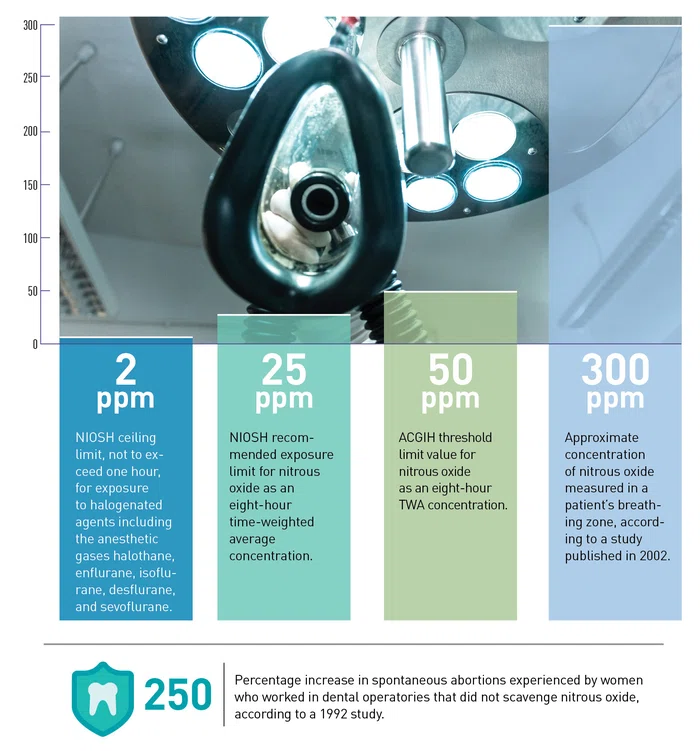

DEPARTMENTS
BY THE NUMBERS
Waste Anesthetic Gases
A recently published AIHA white paper addresses the recognition, evaluation, and control of waste anesthetic gases (WAGs) in post-anesthesia care units. Anesthetic gases, including nitrous oxide and halogenated agents such as isoflurane, desflurane, and sevoflurane, are used to keep patients unconscious during surgery. WAGs are the gases and vapors, including those exhaled by the patient, that leak into the surrounding room. Healthcare professionals who work in hospitals, operating rooms, dental offices, and veterinary clinics are potentially exposed to WAGs. Health effects from WAG exposures can include nausea, dizziness, headaches, fatigue, sterility, miscarriages, birth defects, cancer, and liver and kidney disease. Scavenging systems, including those that capture patient WAGs at their source, are recommended engineering controls for removal of WAGs. Information from the white paper appears below.
From “Recognition, Evaluation, and Control of Waste Anesthetic Gases in the Post-Anesthesia Care Unit”:
“To obtain the desired level of anesthesia of the patients during surgery, the anesthesia provider administers the anesthetic gases in percentages. [… T]he patient’s body becomes saturated with the administered agent and carries a significant amount of the gas […] including from [the patient’s] respiratory system into the PACU. When the patient is wheeled into the PACU following surgery, they can outgas a significant concentration of WAGs exceeding the NIOSH RELs […] into the breathing zone of nurses.”

SOURCES
AIHA: “Recognition, Evaluation, and Control of Waste Anesthetic Gases in the Post-Anesthesia Care Unit” (PDF, October 2021).
NIOSH: “Anesthetic Gases—Reproductive Health.”
OSHA: “Waste Anesthetic Gases.”
Tap on the graphic to open a larger version in your browser.